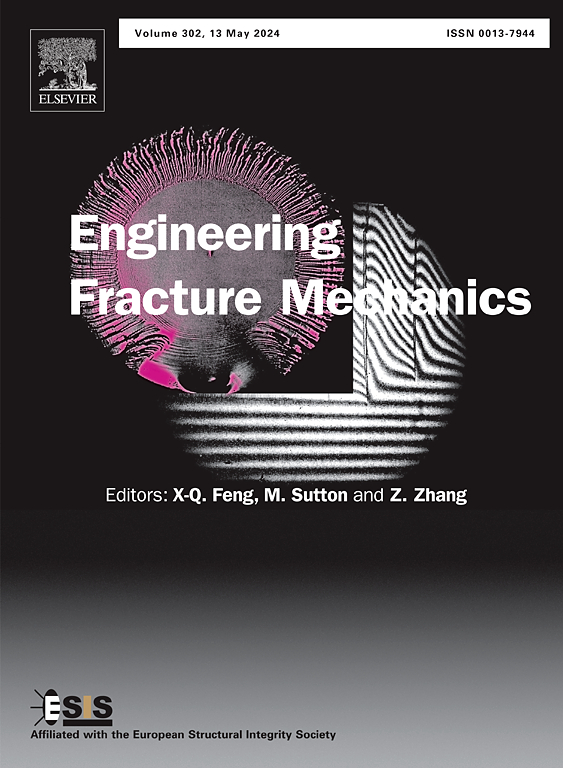Adaptive phase-field modeling of fracture propagation in layered media: Effects of mechanical property mismatches, layer thickness, and interface strength
IF 4.7
2区 工程技术
Q1 MECHANICS
引用次数: 0
Abstract
Fracture propagation in layered media is investigated using an adaptive phase-field method. We focus on the interplay between cracks and interfaces, considering both perfectly and imperfectly bonded interfaces. For perfectly bonded interfaces, three-layer models are analyzed to study the effects of mechanical property mismatches, layer thickness, and confinement pressure on crack growth. Results reveal that critical energy release rate mismatch significantly influences the crack geometry, leading to single through-going fractures, middle layer fragmentation, or delamination. There is an inverse relationship between layer thickness and fragmentation, and between confinement pressure and delamination. For imperfectly bonded interfaces, a phase-field method incorporating an interface energy term is introduced and validated with benchmark examples. This model is used to study the combined effects of mechanical property mismatch and interface strength on crack growth. Our findings demonstrate that the interface strength strongly influences the dominant failure mechanism, with high strength favoring mechanical property mismatch-driven fracture and low strength leading to interfacial failure. Finally, the robustness of the proposed method is illustrated through a complex seven-layer model. This study provides valuable insights into the various factors influencing macroscopic failure mechanisms in layered materials.
求助全文
约1分钟内获得全文
求助全文
来源期刊
CiteScore
8.70
自引率
13.00%
发文量
606
审稿时长
74 days
期刊介绍:
EFM covers a broad range of topics in fracture mechanics to be of interest and use to both researchers and practitioners. Contributions are welcome which address the fracture behavior of conventional engineering material systems as well as newly emerging material systems. Contributions on developments in the areas of mechanics and materials science strongly related to fracture mechanics are also welcome. Papers on fatigue are welcome if they treat the fatigue process using the methods of fracture mechanics.

 求助内容:
求助内容: 应助结果提醒方式:
应助结果提醒方式:


